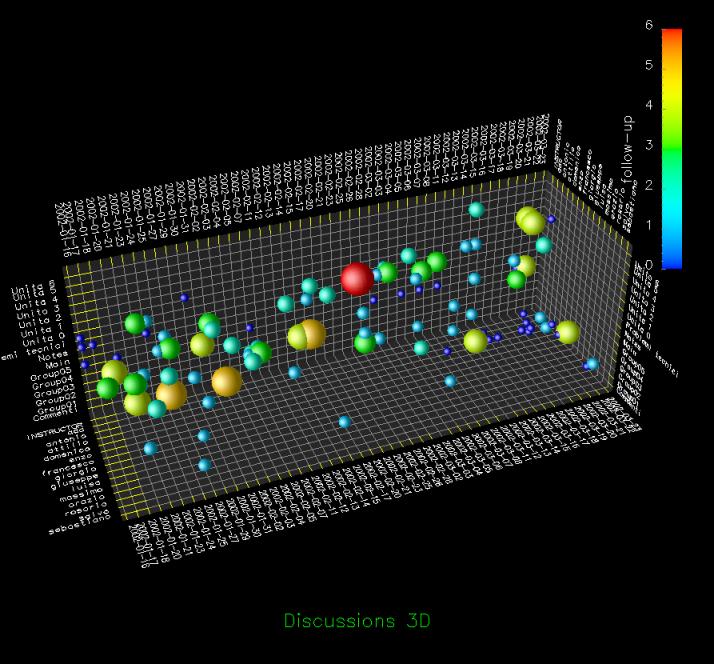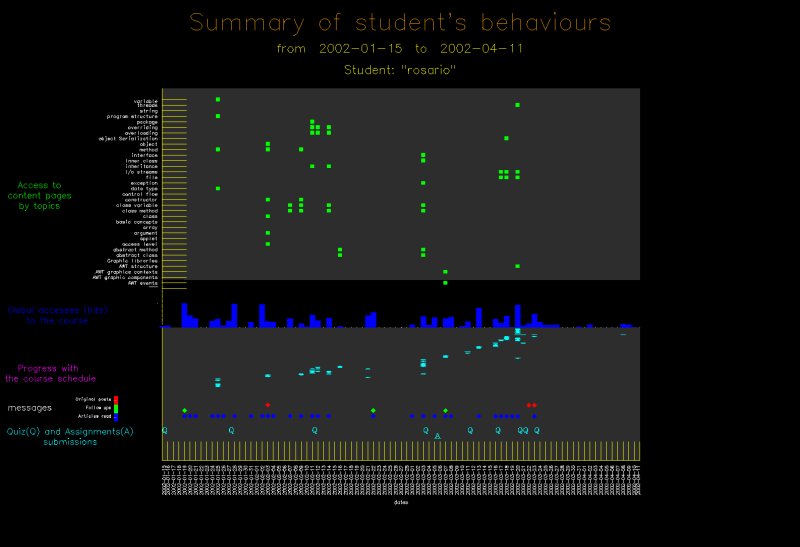Evaluating Information Visualization Applications: Difference between revisions
No edit summary |
|||
| Line 51: | Line 51: | ||
{{Quotation| formulate and answer questions [users] didn’t anticipate having | {{Quotation| formulate and answer questions [users] didn’t anticipate having | ||
before looking at the visualization| [C. Plaisant, 2004]}} | before looking at the visualization| [C. Plaisant, 2004]}} | ||
== References == | |||
*[[http://www.infovis-wiki.net/index.php/CourseVis CourseVis]] | |||
*Mazza: Evaluating information visualization applications with focus groups: the CourseVis experience. [[doi.acm.org/10.1145/1168149.1168155]] | |||
Revision as of 20:33, 26 April 2007
Author
Short Description
CourseVis
Figures
The following visualizations are used to represent the collected data from CourseVis:
- Access Plot:
The access plot shows the students' accesses to the course. It is an mixture of a scatterplot and a histogram.
The scatterplot shows the data of students and of the course while the histogram shows the number of pages of the course accessed by all students on a special date.

- Discussion Plot:
This 3D scatterplot is about the disussions of the course. The figure shows time, topics and students.
The sphere represents a new thread and the number of messages are encoded with the color and size of the sphere.

- Behavioural Graph:
This graph represents the behaviours of a single student.
It shows the student's access to the content pages, the global access to the course, a progress with the schedule of the course, messages and the submission of quizzes and assignments.

Evaluation Types
- Focus Group
- Controlled Experiment
- Semi-structured Interview
Important Citation
via the social gathering and the interaction which being in a focus
group entails
References
- [CourseVis]
- Mazza: Evaluating information visualization applications with focus groups: the CourseVis experience. doi.acm.org/10.1145/1168149.1168155